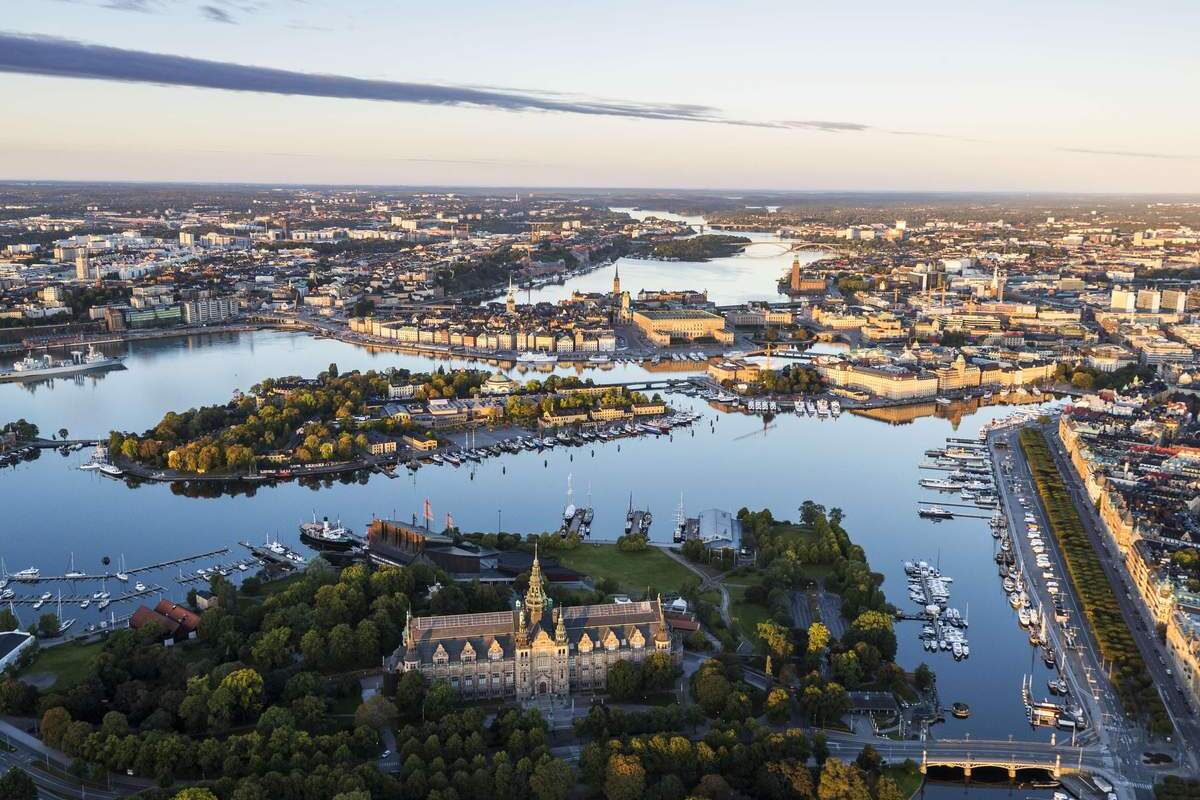Stockholm is not just the capital of Sweden, but also an open-air museum where medieval architecture meets cutting-edge technology. Spread across many islands, the city attracts millions of visitors each year with its atmosphere, natural beauty and cultural richness. It is the place where Nobel Prizes are awarded, world-famous music groups are born and environmental innovations take root. While many people have heard of Stockholm, not everyone knows its unique features and hidden gems. Here is a collection of interesting and educational facts about Stockholm you may not have known.
- Stockholm is built on 14 islands connected by more than 50 bridges, making it one of the most scenic cities in Europe. It is surrounded by the waters of the Baltic Sea and Lake Mälaren. This creates a unique setting where nature blends harmoniously with urban space. For this reason, Stockholm is often called the Venice of the North.
- The history of Stockholm dates back to the 13th century when it was founded as a trading settlement. The first written mention of the city is from 1252. Over time, Stockholm became a center for crafts, trade and maritime activity. Today, many buildings from that era are still standing.
- The Nobel Prizes are awarded in Stockholm every year, except for the Peace Prize, which is awarded in Oslo. The official ceremony takes place on December 10, the anniversary of Alfred Nobel’s death. Laureates receive their awards at the concert hall and then attend a banquet at the city hall. It is one of the most prestigious events in the world.
- The Stockholm metro is known as the longest art gallery in the world. More than 90 out of 100 stations are decorated with sculptures, mosaics, paintings and installations. Artists from different generations have created unique spaces reflecting history, society and the future. This underground gallery is as impressive as the city’s surface attractions.
- Stockholm is one of the world’s leading cities in sustainable urban development. It uses electric buses, energy-efficient buildings and widespread waste sorting systems. The city plans to eliminate the use of fossil fuels by 2040. It has been named the greenest capital in Europe multiple times.
- Gamla Stan, the Old Town of Stockholm, is one of the best-preserved medieval centers in Europe. Its narrow cobblestone streets and colorful 17th-century buildings create a special charm. The central square, Stortorget, often hosts fairs and cultural events. This district offers a glimpse into Sweden’s historical heart.
- Stockholm is home to more than 70 museums, including the famous Vasa Museum, which houses an original 17th-century warship. The ship sank in 1628 and was salvaged in 1961. Its remarkable state of preservation is considered unique in maritime history. The museum attracts over a million visitors annually.
- Stockholm is the birthplace of the legendary pop group ABBA. The city hosts an interactive museum dedicated to the band’s history where visitors can listen to music, view stage costumes and even sing along with virtual members. The museum is very popular among fans of pop culture. ABBA remains one of Sweden’s most iconic musical exports.
- The city has a well-developed cycling infrastructure. Stockholm offers hundreds of kilometers of bike paths and convenient bicycle parking. Cycling is one of the most popular means of transportation for residents. The government even provides subsidies for electric bicycles.
- Surrounding Stockholm is an archipelago of more than 30,000 islands, islets and rocks. Many of them can be visited by boat, ferry or kayak. This natural maze is a favorite leisure destination for both locals and tourists. There are wild, uninhabited islands as well as resort spots with hotels and restaurants.
- The city is home to one of the world’s oldest still-operating restaurants — Den Gyldene Freden, founded in 1722. It still operates in the original building and preserves its 18th-century interior. Members of the Swedish Academy, which awards the Nobel Prize in Literature, often meet here. The restaurant is known for its traditional Swedish cuisine.
- Each year Stockholm hosts the Kulturnatt cultural festival, during which museums, theaters, galleries and other institutions open their doors for free. The city transforms into a vibrant cultural space. Visitors can take part in workshops, concerts and performances. This night is a true celebration of art for all generations.
- Stockholm has a system of free drinking water fountains on the streets. The water comes from Lake Mälaren and is considered among the cleanest in the world. Residents and tourists can refill bottles at designated public taps. This initiative supports environmental protection and reduces plastic use.
- The city actively supports startups and tech companies, earning it the nickname Sweden’s Silicon Valley. Global brands like Spotify, Skype and Klarna were founded here. Stockholm ranks second in the world for the number of tech unicorns per capita after Silicon Valley. It is a major hub for young innovators.
- Local cuisine combines traditional dishes with modern culinary trends. Popular foods include herring, meatballs, salmon and cinnamon buns. The city has many Michelin-starred restaurants as well as vegan options. Stockholm is increasingly being recognized as the culinary capital of Scandinavia.
These interesting facts about Stockholm offer a deeper understanding of why the city is so exceptional and worth visiting. The Swedish capital inspires with its harmony between history and modernity, nature and city life. Stockholm impresses through its dedication to culture, innovation and sustainability. Such fascinating facts reveal just how much this extraordinary place has to offer.





